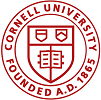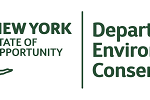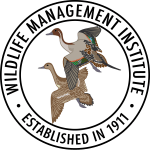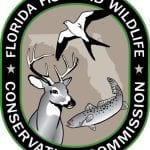Jump to:
Change is Coming
The need for State Wildlife Agencies (SWAs) to adapt to contemporary socio-ecological conditions has been amply identified over the last dozen years. However, change has been slowed by
- historical funding dependencies on hunters, anglers, boaters and recreational shooters, resulting in narrow programmatic focus;
- institutional resistance to change;
- public apathy towards conservation and lack of political and financial support for conservation;
- and rapidly changing social-ecological context and attendant lack of understanding about potential impacts.
Agencies must find ways to overcome these barriers because changes will inevitably be made – either by agencies or to them.
Transformative Change
Transformative change has been described in various ways. For state wildlife agencies, transformation tends to refer to substantial change in three aspects of agency attention: goals, activities, and boundaries.
- Goals refers to the domain addressed by agency, or the scope of desired impacts from agency management of wildlife resources.
- Activities can be thought of as the products and services an agency offers to yield benefits to citizens.
- Boundaries refers to who is considered a stakeholder or who is purposefully affected by agency management programs.
The literature on transformative change in organizations is large, but we can boil it down to a couple key ideas. Most importantly for our purposes we need to think of change as having two primary kinds of drivers:
- Involuntary, Exogenous Pressures (Environmental Determinism)
- Voluntary, Internally Driven (Strategic Choice)
To exercise strategic choice, at least three elements need to be present:
- Vision. A clearly articulated idea of what the future of the agency should look like.
- Adaptive, supportive leadership, in the form of key individual leader[s] and hopefully a guiding coalition of agency leaders.
- Strategy. That is, you need broad-based action within an agency and institutionalization of identified changes that are needed.
SWAs exhibit a range of responses to pressures to change, from rigidly maintaining traditional boundaries, goals and services to nimbly adapting to accommodate new stakeholders’ interests and desired outcomes from management. These represent two ends of the spectrum in terms of response to pressures to reform. One characterized by rigidity; that is, resisting, retrenching and eventually declining in relevance and being replaced. The other, characterized by adaptability; that is, willing to analyze, make a strategic choice, and take action to change to retain relevance to society. With either path, change occurs.
The Future of State Wildlife Agencies
So the question is, how will the future of SWAs be determined? Will the future for any SWA be the result of fate, choice or a guided combination? As the organizational change gurus would put it, will SWAs change primarily as a result of environmental determinism or strategic choice?
 We believe this is a false dichotomy in the case of SWAs. To varying degrees, both environmental determinism and strategic choice are at work in SWAs where the need to change is recognized internally or externally. Many SWA leaders understand this. They assess the direction of exogenous forces on their organization and their ability to influence it (environmental determinism), and following that assessment they evaluate the potential and costs of creating a desired future (strategic choice).
We believe this is a false dichotomy in the case of SWAs. To varying degrees, both environmental determinism and strategic choice are at work in SWAs where the need to change is recognized internally or externally. Many SWA leaders understand this. They assess the direction of exogenous forces on their organization and their ability to influence it (environmental determinism), and following that assessment they evaluate the potential and costs of creating a desired future (strategic choice).
Alternative Scenarios for Agency Reaction
An alternative scenario for thinking about Agency reaction to change was proposed by Hrebiniak and Joyce in their paper “Organizational Adaptation: Strategic Choice and Environmental Determinism.” Both strategic choice and environmental determinism are at work for an organization such as a SWA. We have tried to capture the essence of how these authors depict the situation in a matrix form. The 4 cells created by qualitatively referring to low and high degrees of either strategic choice or environmental determinism are labeled in the table.

SWAs in the category we label coasting experience little external pressure to change in any particular direction, and they exercise little strategic choice in whatever change befalls them. These SWA’s do change sporadically, but often without thoughtful direction-setting analysis among staff and stakeholders. Adaptation of a SWA in this situation is largely by chance. This mode equates to being adrift—rudderless in the presence of what may be fickle or at least seemingly unpredictable winds of change. We say “seemingly” unpredictable because SWAs in this situation are not using social science to become informed about economic, sociocultural and demographic trends that can help them anticipate changes coming and then in turn applying that insight to meet their public trust responsibilities. It is likely that coasting SWAs are heading for irrelevance in the eyes of most citizens. Nevertheless, by paying more attention to external factors and taking actions to increase both self-determination and relevance to society, SWAs currently in this category can move to constrained self-determining.
SWAs in the category labeled natural selection represent a condition characterized by exercising little strategic choice, feeling a great deal of focused external pressure from an often narrow constituency, and perceiving minimum flexibility with respect to directing agency change. They urgently need to adapt to avoid their narrow focus causing them financial strangulation or replacement by a different entity better suited to meet the breadth of societal interests in wildlife. This situation may seem dire, but it is salvageable. By paying closer attention to expressed needs and interests of all stakeholders and taking actions to increase both self-determination and relevance to a broader swath of society, SWAs currently in this category can move to constrained self-determining.
SWAs in the category labeled self-determining, a condition of high strategic choice and low environmental determinism, are in a position to exert maximum choice with respect to direction of change. Such organizations can adapt almost entirely by their own design, yet as public agencies, SWAs seldom if ever have this freedom. Minimally, they have legal mandates that set sideboards on the scope and extent of change they can adopt. Additionally, they typically rely on funding models that strongly influence their behaviors. SWAs also are accountable in specific ways to elected officials or appointed bodies, such as governors, legislatures, and commissions, who in turn pay attention to citizens, many of whom expect to have a voice in agency direction.
SWAs in the category labeled constrained self-determining, a condition enabled by both relatively high strategic choice and high environmental determinism, are in a position to influence direction and design of change. Constraints on change must be acknowledged, and where necessary and possible, modified to allow important changes to occur. In this situation, well-informed and effective leaders can maneuver their agencies toward a preferred future condition (e.g., more effectively meeting trust responsibilities, greater relevance to society overall, sustainable conservation achievements) within some bounds that may be negotiable.
When considering adaptive change by a SWA based on this strategic choice matrix (simplified below), you realize that only three cells are relevant because independence from exogenous pressures (i.e., unconstrained self-determining) is not plausible for an agency managing a public trust resource. That leaves 3 options:
- coasting—provide no direction for change and accept eventually becoming irrelevant;
- natural selection—assume a posture of “victim” and accept eventual irrelevance or externally-imposed reorganization; and
- constrained self-determining where potential value of change is recognized and the challenge of guiding change strategically is embraced.

What’s Needed?
Most agencies want to have some control over the impacts of change forces. They seek guidance for a strategic approach to change. In response to this, a group of wildlife professionals and scholars got their heads together to study the public trust doctrine, public trust thinking and good governance norms applied to natural resources. From our examination of these ideas, we developed the Wildlife Governance Principles. Those principles provide a keel to help keep the agency upright as it makes a course change.
Strategic change requires stakeholder input through inquiry and engagement through involvement and participation. This can take the form of a variety of practices that can enable an agency to adapt and transform strategically.
Clearly, strategic choice requires purposeful intervention by change agents. Identifying who might be most effective at leading change in your agency is important. Advocating for change can be a risky business. Something could go awry, but that risk is less than just waiting to see what will happen if no intention by agency leaders is acted upon.





